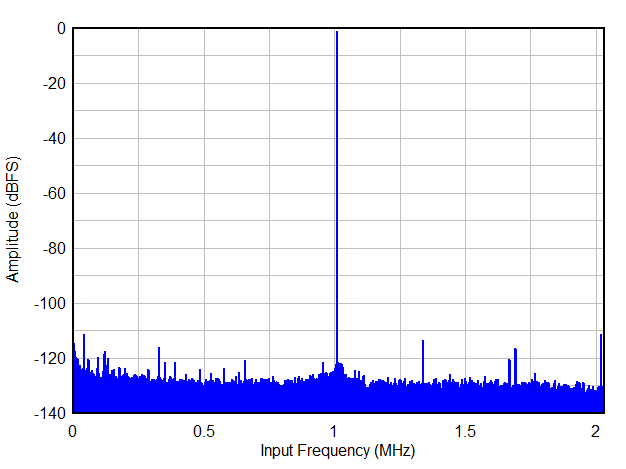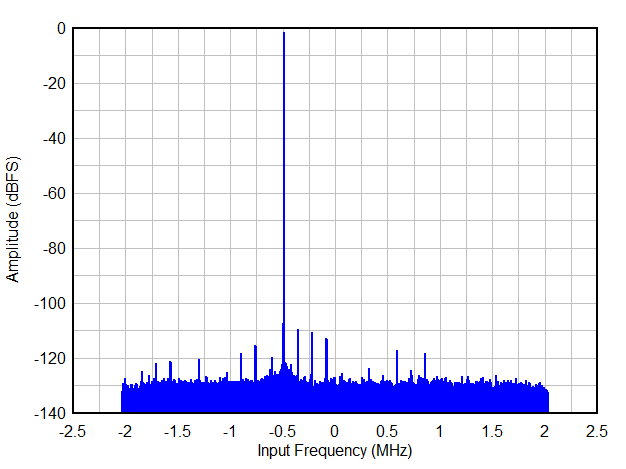ZHCSM31B September 2020 – March 2022 ADC3660
PRODUCTION DATA
- 1 特性
- 2 应用
- 3 说明
- 4 Revision History
- 5 Pin Configuration and Functions
-
6 Specifications
- 6.1 Absolute Maximum Ratings
- 6.2 ESD Ratings
- 6.3 Recommended Operating Conditions
- 6.4 Thermal Information
- 6.5 Electrical Characteristics - Power Consumption
- 6.6 Electrical Characteristics - DC Specifications
- 6.7 Electrical Characteristics - AC Specifications
- 6.8 Timing Requirements
- 6.9 Typical Characteristics
- 7 Parameter Measurement Information
- 8 Detailed Description
- 9 Application and Implementation
- 10Power Supply Recommendations
- 11Layout
- 12Device and Documentation Support
- 13Mechanical, Packaging, and Orderable Information
9.1.3 Application Curves
The following FFT plots show the performance of THS4541 driving the ADC3660 operated at 65 MSPS with a full-scale input at -1 dBFS. The first FFT spectrum below shows the performance with a single tone input at FIN = 1 MHz and decimation by 16 (real).
The second FFT spectrum shows the a single tone input at FIN = 5 MHz and complex decimation by 16 where the NCO is programmed to 4.5 MHz.

|
Decimation by 16, real |

Decimation by 16, complex, NCO = 4.5 MHz |